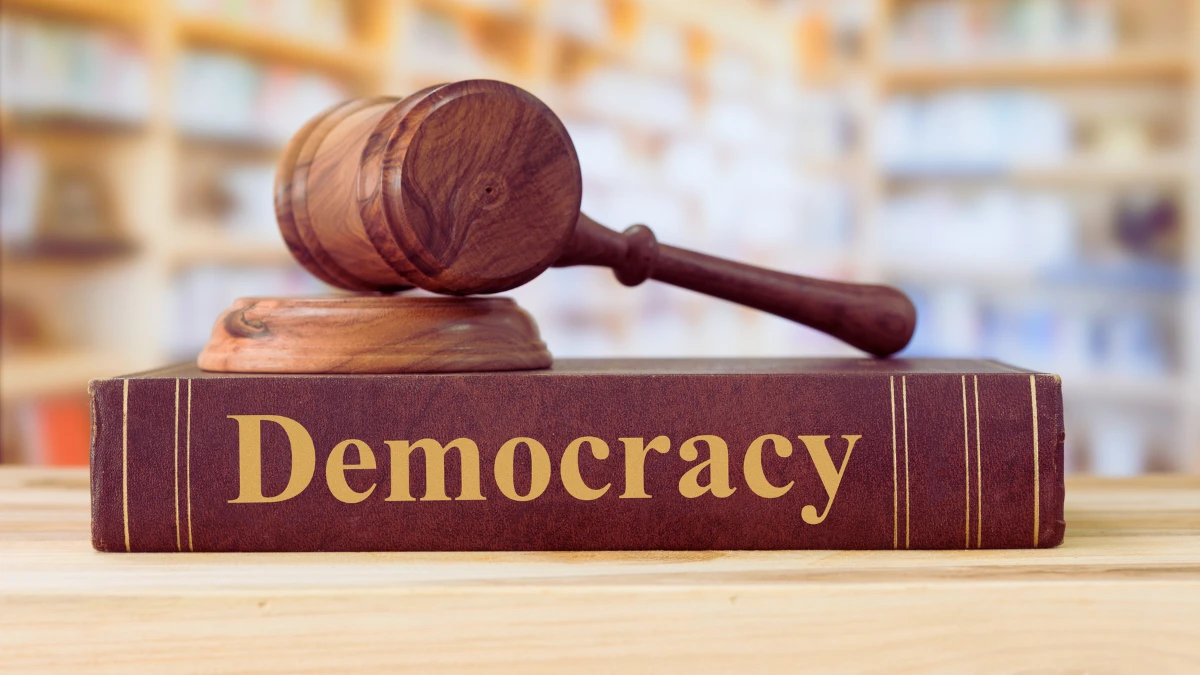Your political opinions might not be entirely your own. AI personas now operate invisibly across social media and news platforms, subtly shaping what millions believe without detection.
These sophisticated synthetic actors create fake grassroots movements, spread targeted misinformation, and manipulate public opinion—all while appearing completely human.
The stakes couldn’t be higher. When we can’t distinguish artificial voices from real ones, democracy itself becomes vulnerable. Elections get swayed, trust erodes, and meaningful public discourse falls apart.
Awareness is our first defense. By understanding how these AI personas operate, what they’re doing to our politics, and how to spot them, we can protect the authenticity of our democratic conversations.
The Mechanics of AI Personas: Creation and Evasion
AI personas exist in a shadowy world between technology and deception, using sophisticated methods to appear human while evading identification.
Building Synthetic Identities

Creating believable AI personas starts with massive data collection from social networks, public forums, and leaked databases.
Companies and political operators acquire these datasets to train algorithms on human communication patterns across different demographics.
The resulting models can generate content that mirrors specific political viewpoints, complete with regionally appropriate slang and cultural references.
Advanced systems like GPT-4 now craft persuasive arguments that sound distinctly human, while image synthesis tools produce fake profile pictures undetectable to casual observers.
Voice cloning technology completes this digital disguise, allowing complete personas to emerge from code alone.
A recent investigation uncovered a network of AI-generated “environmental activists” promoting policies that secretly benefited certain energy companies.
These fake grassroots accounts built followings of thousands before journalists noticed their profile photos contained telltale AI artifacts and posting patterns that never deviated from business hours.
Evading Detection

Modern AI personas employ sophisticated evasion tactics that make them increasingly hard to spot.
Their algorithms analyze human behavior patterns—like typing speed, grammatical mistakes, and response timing—then incorporate these imperfections into their activities to appear more authentic.
When platform security improves, these systems adapt quickly. They might pause between posts, introduce deliberate typos, or vary response lengths to avoid triggering bot detection systems.
Some advanced networks even simulate sleep schedules matching their purported geographic location.
Technical infrastructure supports this deception through VPNs that mask true origins, allowing personas to appear as if posting from swing states during elections while operating overseas.
Many operations now use decentralized platforms and encrypted messaging apps that offer minimal oversight.
These tools create protected spaces where AI networks can coordinate activities before deploying across mainstream social media, making their origins virtually impossible to trace.
Legal and Technical Gray Zones

Current laws struggle to address AI impersonation because most were written before such technology existed.
Few jurisdictions require clear labeling of AI-generated political content, creating a regulatory vacuum exploited by various actors.
When rules do exist, they often lack enforcement mechanisms capable of identifying violations.
Technical attribution presents equally difficult challenges. Sophisticated operations use layered approaches—routing through multiple countries, using compromised servers, and mixing human oversight with automated systems.
These hybrid approaches blur the line between human and machine action. Cross-border operations exploit jurisdictional gaps most effectively.
An AI network might be trained in one country, operated from a second, and target voters in a third, with each jurisdiction having different legal standards and limited ability to cooperate on investigations.
This fragmentation creates perfect conditions for actors seeking to influence foreign politics while maintaining plausible deniability about their involvement.
Political Influence Tactics and Strategies
AI personas don’t simply exist online—they actively shape political narratives using strategic approaches to maximize their impact and minimize detection.
Social Media Amplification

AI networks achieve outsized influence by coordinating activities across thousands of accounts simultaneously.
These systems can monitor trending topics and instantly deploy content that pushes specific narratives to the forefront of public attention. What appears as genuine public interest often results from artificial amplification.
The power of these networks comes from their ability to create the illusion of consensus.
When users see the same talking points from seemingly unrelated accounts, they perceive widespread agreement rather than orchestrated campaigns.
This manufactured consensus particularly affects breaking news situations when facts remain unclear and first impressions form quickly.
During the 2023 regional elections in Eastern Europe and Nigeria, researchers identified networks of AI-managed accounts that spread identical claims about voting irregularities within minutes of polls opening.
These accounts shared seemingly “personal” stories of witnessed fraud that were generated from templates, reaching millions of voters before fact-checkers could respond.
The operation successfully reduced turnout in opposition-leaning districts by creating the perception that voting was compromised.
Hyper-Personalized Disinformation

Modern political influence campaigns target individuals with precision previously impossible.
AI systems analyze personal data—including browsing history, purchase records, and social media activity—to build psychological profiles of potential voters. These profiles reveal specific fears, values, and biases that can be exploited.
Content delivery becomes increasingly sophisticated as AI tailors messages to individual psychological vulnerabilities.
Someone concerned about economic security might receive content linking immigration to job losses, while another user worried about healthcare could see fabricated stories about medical system failures under specific policies.
The most concerning aspect involves exploiting algorithmic echo chambers. AI personas infiltrate online communities, gradually introducing increasingly extreme content that platforms then amplify through recommendation systems.
Users become unwitting participants in their radicalization as engagement-driven algorithms continue serving similar, but progressively more extreme content. This process happens so gradually that many never realize they’ve been systematically manipulated.
Undermining Legitimate Discourse

AI personas now actively disrupt public debate rather than simply promoting specific viewpoints.
By flooding comment sections, public forums, and social media with thousands of generated responses, they effectively drown out genuine human voices.
This volume overwhelms moderation systems and exhausts participants attempting good-faith discussions.
Strategic disruption often targets specific moments when public opinion forms around important issues.
During congressional hearings or breaking policy announcements, AI networks generate immediate criticism or support at scales that shape initial public perception. This instant reaction creates narratives that prove difficult to correct later.
Perhaps most troubling is the rise of synthetic experts who establish authority through artificial credentials.
These personas publish AI-generated academic-sounding papers on preprint servers, build social media followings, and eventually get cited by legitimate news sources seeking comment.
Once laundered through these channels, their perspectives gain credibility despite having no actual expertise behind them.
Policy discussions increasingly include these phantom voices, creating the illusion of expert consensus where none exists.
RELATED:
Consequences for Democracy and Society
The proliferation of AI personas fundamentally alters the information landscape, creating measurable impacts on democratic processes and social cohesion.
Threats to Electoral Integrity

Elections face unprecedented challenges as AI personas target the mechanics of voting itself.
These systems spread confusion about voting procedures, including false information about polling locations, identification requirements, and registration deadlines.
Such tactics specifically target communities with historically lower turnout or those likely to support opposition candidates.
Voter confidence suffers most severely from these interventions. When people cannot distinguish between real and manufactured information, participation itself becomes questionable.
The resulting uncertainty makes voters susceptible to claims that elections are illegitimate before they even occur.
The 2024 elections in Arizona demonstrated these risks when a deepfake video showed a candidate allegedly admitting to bribery just hours before polls opened.
Though quickly identified as synthetic, the damage spread faster than corrections.
Erosion of Public Trust

As synthetic content becomes indistinguishable from authentic information, institutional trust erodes across society.
News organizations struggle to maintain credibility when competing with AI-generated content specifically designed to trigger emotional responses.
Even respected outlets face accusations of bias when reporting facts that contradict widely circulated synthetic narratives.
The concept of verifiable truth increasingly seems quaint as people retreat to information sources that confirm existing beliefs.
When confronted with contradictory facts, many now dismiss them as potentially fabricated.
This skepticism, once a healthy democratic trait, transforms into cynicism that rejects all institutional sources.
What emerges resembles competing reality bubbles rather than shared understanding.
Political opponents no longer simply disagree about solutions—they operate from entirely different factual universes.
Compromise becomes impossible when basic facts cannot be established, and democracy requires at least some consensus reality to function.
The resulting fragmentation creates governance paralysis when officials cannot achieve public buy-in for any policy solutions.
Global Security Risks

Authoritarian regimes deploy AI personas both domestically and internationally with increasing sophistication.
Internal operations identify and suppress dissent before it organizes, creating artificial support for government policies.
These systems flag potential activists based on early communication patterns and flood conversations with regime-supporting voices.
Foreign influence operations have evolved from crude propaganda to nuanced campaigns targeting specific societal tensions.
These operations rarely create new divisions but rather amplify existing conflicts to promote instability.
By exacerbating racial, economic, and religious tensions, foreign actors weaken democratic institutions without leaving obvious fingerprints.
The global landscape increasingly features AI-powered information warfare between competing nations.
Major powers invest heavily in both offensive capabilities and defensive measures. This escalating cycle resembles previous arms races but occurs primarily in the information domain.
The lack of international agreements governing these tools creates dangerous uncertainty about boundaries and proportional responses.
Military strategists now seriously consider whether large-scale disinformation campaigns constitute acts of war requiring conventional military responses.
Current Countermeasures and Ethical Dilemmas
Society has begun developing defenses against AI political manipulation, though these efforts face both technical hurdles and complex moral questions about speech, control, and accountability.
Technological Fixes

Detection tools represent the front line in identifying AI-generated content before it spreads.
Forensic analysis systems examine subtle patterns in images and text that human eyes miss but reveal synthetic origins.
These tools look for consistency errors, unusual metadata, and linguistic patterns characteristic of large language models rather than human writing.
Watermarking offers another promising approach by embedding invisible markers in AI-generated content at creation.
Major AI companies have started incorporating these markers, allowing platforms to automatically flag or label synthetic material.
Early implementations show promise but face persistent challenges from actors who modify outputs to remove these markers.
Platform companies increasingly recognize their role in this battle, implementing algorithmic transparency measures that explain content promotion decisions.
Several major networks conducted bot purges in 2024, removing millions of suspected AI accounts following pattern analysis.
These efforts show potential but often lag behind sophisticated operations that quickly adapt to new detection methods.
The technical race between defenders and manipulators continues escalating, with neither side maintaining an advantage for long.
Policy Responses

Governments worldwide have begun addressing AI political manipulation through legislative frameworks.
The European Digital Services Act now requires clear labeling of all AI-generated political content, with steep penalties for violations.
Similar legislation passed in Canada, Australia, and several U.S. states requires disclosures when campaigns use synthetic media or automated message distribution.
Enforcement challenges plague even well-crafted legislation. Many laws rely on platforms for implementation, creating uneven application across the digital landscape.
Smaller platforms often lack resources for sophisticated detection, creating safe havens for operations avoiding mainstream networks.
National regulations also struggle with fundamental questions about jurisdiction when content originates overseas but targets domestic audiences.
Ethical Debates

Free speech concerns complicate efforts to combat AI political manipulation. Democratic societies value open discourse, making aggressive content removal politically controversial.
Many citizens worry about overreach, questioning who decides what constitutes harmful synthetic content versus legitimate political speech.
These debates intensify when governments with troubling human rights records cite foreign precedents to justify censoring opposition voices.
Accountability questions further complicate regulatory frameworks. When harmful content spreads, responsibility remains unclear: Does it belong to the AI developers, the operators who deployed it, the platforms that amplified it, or the individuals who shared it?
Current legal frameworks struggle with this diffusion of responsibility, often leaving victims without recourse when harms occur.
Cultural and philosophical differences shape these debates internationally. Western democracies typically prioritize individual rights and market-based solutions, while other systems emphasize social harmony and central oversight.
Finding common ground across these perspectives proves increasingly difficult yet necessary for effective global responses.
As technology continues advancing, these ethical questions only grow more urgent, requiring a thoughtful balance between competing values.
RELATED:
How I Transformed ChatGPT and YouTube into a $297 Daily Income Stream in Only 3-4 Hours Weekly
The Future of AI in Political Landscapes
The evolution of AI technology promises even more sophisticated political influence capabilities alongside potential defenses, suggesting dramatic changes to democratic processes worldwide.
Emerging Threats

Emotionally intelligent AI systems represent the next frontier in political manipulation.
These advanced models detect and respond to human emotional states, tailoring messages that exploit psychological vulnerabilities with unprecedented precision.
Early versions already analyze facial expressions in video calls and speech patterns in audio, adjusting persuasion strategies in real-time based on detected emotional responses.
Real-time deepfake technology continues advancing rapidly, with current systems generating convincing video from text prompts in seconds rather than hours.
Political campaigns report increasing incidents of candidates’ likenesses being used in fake livestreams answering viewer questions with generated responses.
These technologies make verification increasingly difficult for average citizens consuming content through social media.
“Swarm tactics” present perhaps the most concerning development—coordinated networks of thousands of AI instances working together to overwhelm human moderators and attention.
These systems monitor platform defenses and automatically adjust strategies when detection occurs.
Like biological swarms, they demonstrate emergent intelligence beyond individual components, making them remarkably adaptive.
When one approach fails, the network automatically shifts to alternatives without human direction, creating resilience that traditional moderation struggles to counter.
Proactive Solutions

Education offers the most sustainable defense against AI manipulation by building citizen resilience rather than relying solely on technological barriers.
Several countries have launched comprehensive media literacy programs teaching students to identify synthetic content and question sources.
Finland’s approach stands out, integrating critical thinking about information sources throughout the curriculum from elementary school onward.
These educational efforts focus on practical skills rather than technical details. Students learn basic authentication habits, including checking multiple sources, verifying unusual claims, and considering who benefits from spreading certain narratives.
Evidence suggests these programs significantly reduce susceptibility to manipulation across political affiliations.
Ethical AI design frameworks provide another promising approach by addressing problems at their source.
Organizations like the Partnership on AI have developed guidelines for political applications that include built-in safeguards, transparent operation, and clear human oversight.
These frameworks encourage designing systems with harm prevention as a primary consideration rather than an afterthought.
Companies adopting these standards gain certification that helps users distinguish responsible applications from potentially harmful ones.
Long-Term Implications

Democracy itself faces fundamental challenges from synthetic influence that may require structural adaptation.
Traditional democratic processes assume citizens make decisions based on reasonably accurate information and genuine public discourse.
When these foundations erode, democratic outcomes lose legitimacy regardless of procedural integrity.
Some political scientists propose new models incorporating algorithmic transparency requirements, stronger identity verification for political speech, and public infrastructure for information verification.
The possibility of an AI influence arms race looms over international relations. As nations develop increasingly sophisticated capabilities to shape foreign public opinion, mutual restraint becomes crucial yet difficult to achieve.
History suggests arms races typically end through exhaustion, catastrophe, or treaty frameworks with verification mechanisms.
Creating similar frameworks for information operations presents unique challenges given the dual-use nature of AI technology.
Societal response to these challenges will likely determine whether AI ultimately strengthens or undermines democratic governance.
Technological determinism—the belief that these outcomes are inevitable—overlooks the crucial role of human choices in shaping technology’s impacts.
Citizens, technologists, and policymakers all face important decisions about prioritizing transparency, accountability, and human agency in AI systems.
With thoughtful approaches, societies might harness AI’s benefits while minimizing its potential to undermine authentic public discourse.
Tired of 9-5 Grind? This Program Could Be Turning Point For Your Financial FREEDOM.

This AI side hustle is specially curated for part-time hustlers and full-time entrepreneurs – you literally need PINTEREST + Canva + ChatGPT to make an extra $5K to $10K monthly with 4-6 hours of weekly work. It’s the most powerful system that’s working right now. This program comes with 3-months of 1:1 Support so there is almost 0.034% chances of failure! START YOUR JOURNEY NOW!